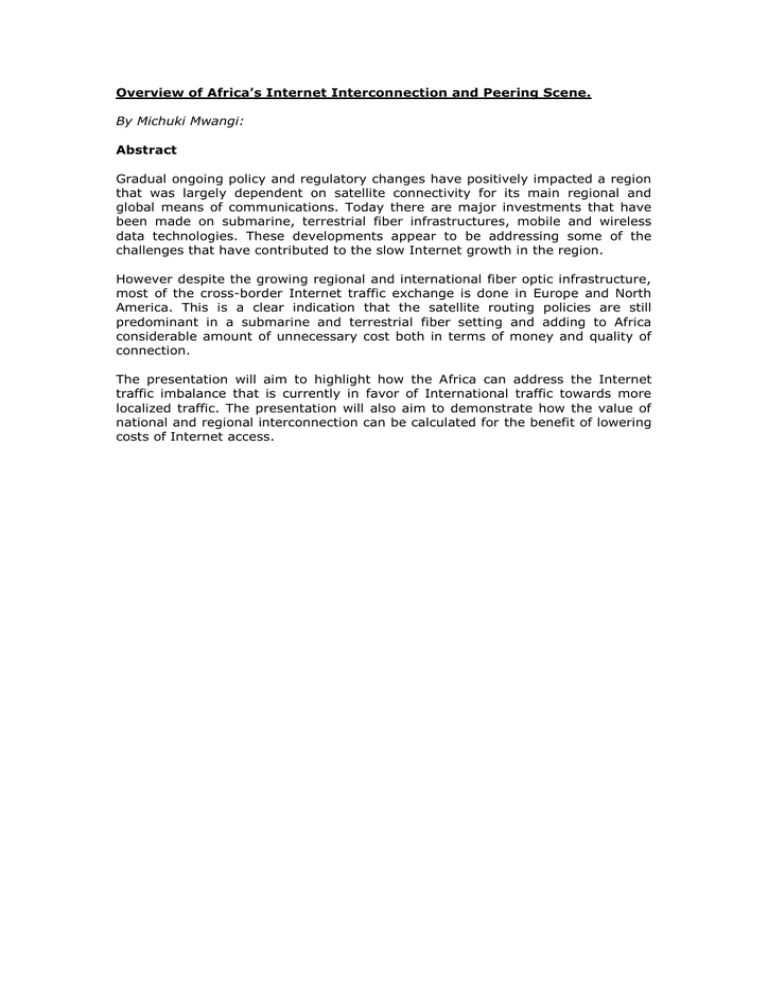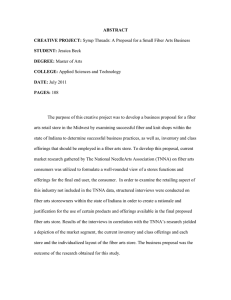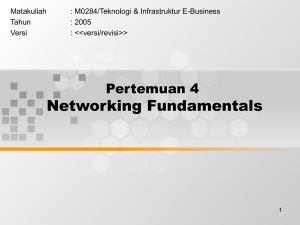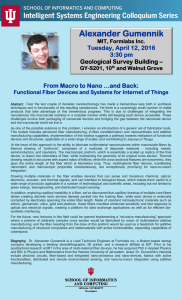Overview of Africa’s Internet Interconnection and Peering Scene. Abstract By Michuki Mwangi:
advertisement

Overview of Africa’s Internet Interconnection and Peering Scene. By Michuki Mwangi: Abstract Gradual ongoing policy and regulatory changes have positively impacted a region that was largely dependent on satellite connectivity for its main regional and global means of communications. Today there are major investments that have been made on submarine, terrestrial fiber infrastructures, mobile and wireless data technologies. These developments appear to be addressing some of the challenges that have contributed to the slow Internet growth in the region. However despite the growing regional and international fiber optic infrastructure, most of the cross-border Internet traffic exchange is done in Europe and North America. This is a clear indication that the satellite routing policies are still predominant in a submarine and terrestrial fiber setting and adding to Africa considerable amount of unnecessary cost both in terms of money and quality of connection. The presentation will aim to highlight how the Africa can address the Internet traffic imbalance that is currently in favor of International traffic towards more localized traffic. The presentation will also aim to demonstrate how the value of national and regional interconnection can be calculated for the benefit of lowering costs of Internet access.











